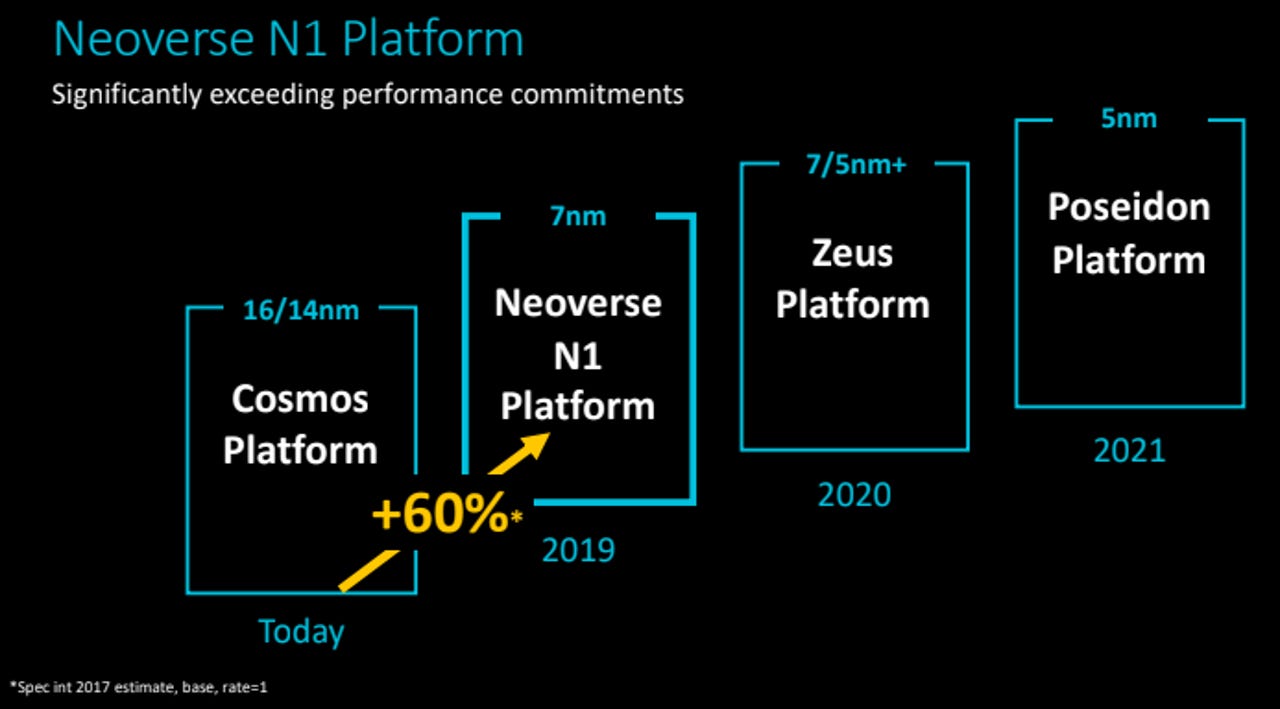Arm unveils Neoverse N1, E1 platforms for cloud-to-edge infrastructure


Arm on Wednesday is unveiling the latest platforms within its Neoverse brand, a family of products designed for an IOT-driven era. The Neoverse N1 platform is optimized for 7nm technology and significantly exceeds Arm's performance commitments. The Neoverse E1 platform, meanwhile, is a high-efficiency throughput platform that's scalable for edge to core data transport.
Arm first introduced the Neoverse brand in October of last year, describing it as technology designed to power infrastructure from the data center to the edge.
"As the world transitions from mobile phones... to IOT-types of devices -- meaning lots of sensors and endpoints that can process and make decisions locally -- all of those devices are going to be much, much larger in total volume than the global smartphone marketplace and as a result is going to generate so much more data," Drew Henry, SVP and GM of Arm's Infrastructure Line of Business, said to reporters last week. "The infrastructure is going to need to adapt to the amount of data coming in."
The N1 platform, previously known as "Ares," is 60 percent faster than the current Cosmos platform. "When you look at workloads that matter, it's much much higher than that," Henry said. For instance, 2.5x more performance on cloud workloads such as MemcacheD or NGINX.
The platform should address criticisms ARM has faced in the past, Henry said.
"One of the criticsms Arm has always had is, 'Your is platforms aren't as performant as we think they should be,'" he said, "despite the fact the Cosmos platform, software developers will tell you, is high performance."
Going beyond raw compute performance, the Neoverse N1 platform was built with infrastructure-class features including server-class virtualization, RAS support, power and performance management, and system level profiling. The platform includes a coherent mesh interconnect and a compact design approach that enables scaling from four to 128 cores. The scalability gives Arm partners the flexibility to add accelerators or other features with their own on-chip custom silicon. All of this adds up to a lower TCO, Henry said.
While the Neoverse N1 is about the amount of compute it offers, the Neoverse E1 "is all about how fast you can move data," Henry said. This matters, he said, given that roughly 150 exabytes of data currently traverse the internet each month -- a figure that's going to double in the next few years.
The E1 was "designed very specifically to put a lot of throughput through the internet," Henry said. It achieves 2.7x more throughput performance, 2.4x more throughput efficiency, and over 2x more compute performance compared to Arm's previous generations. It also delivers scalable throughput for edge to core data transport, supporting everything from a sub-35W base station to a multi-100GB router. It also leverages the entire Arm software ecosystem.
With reference platforms available now, Arm expects the first platforms based on N1 and E1 will come to market this year, ramping into next year.
The new platforms follow other big announcements from Arm. In November, for instance, Amazon announced it was building the AWS Graviton processor based on the Cosmos platform.